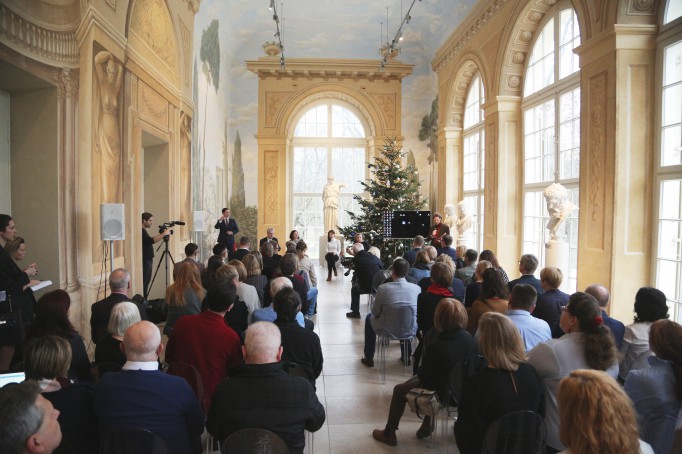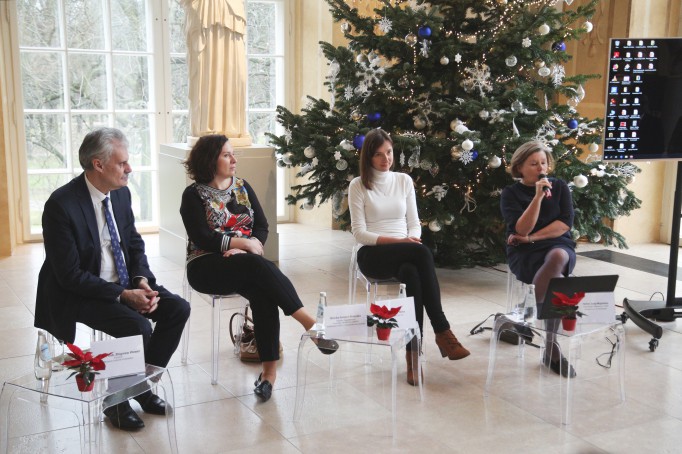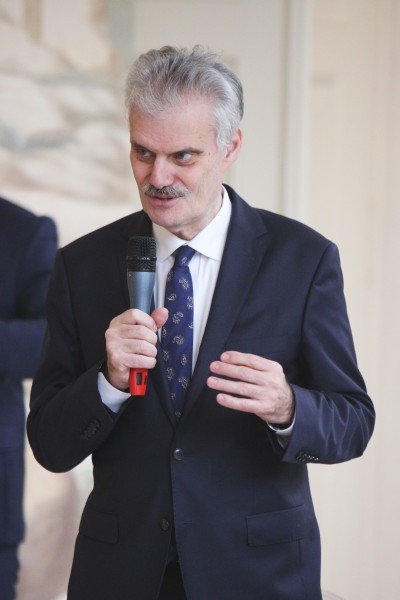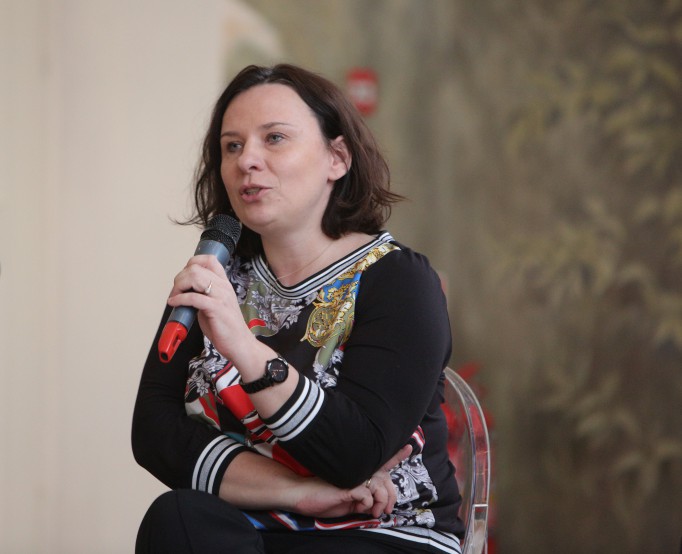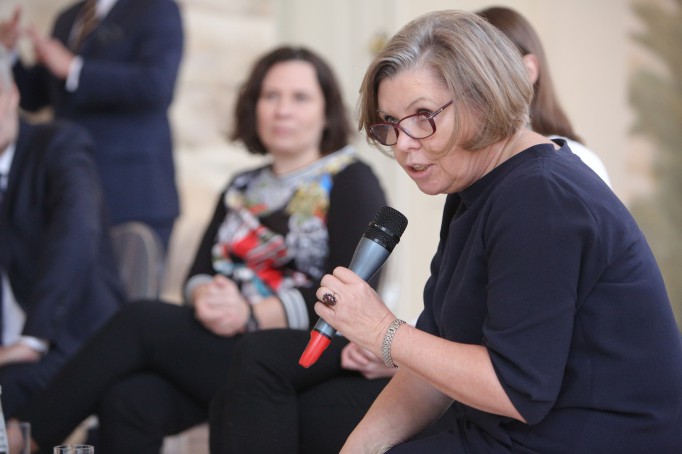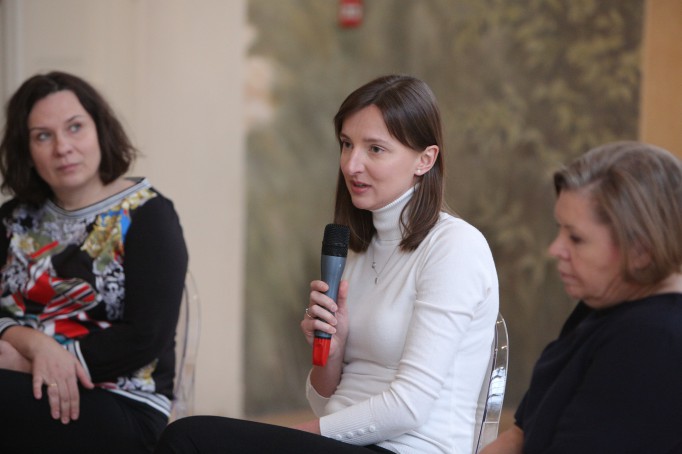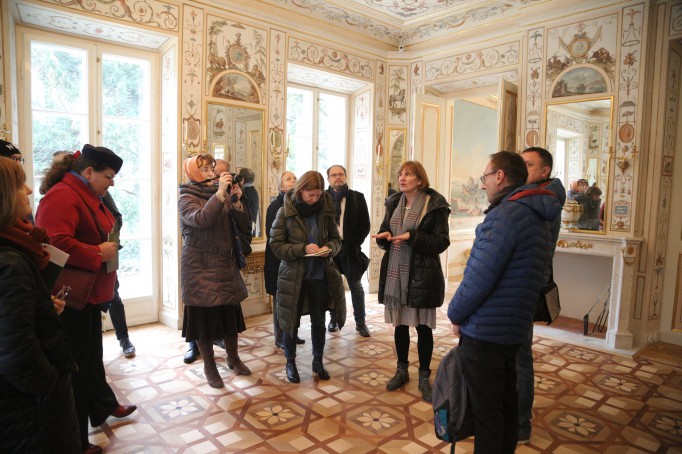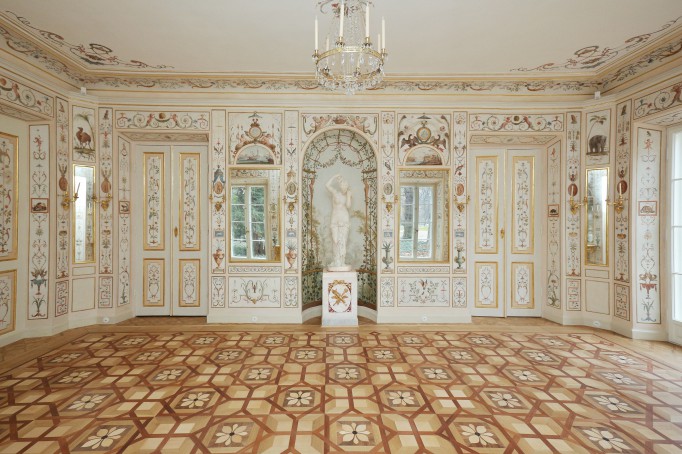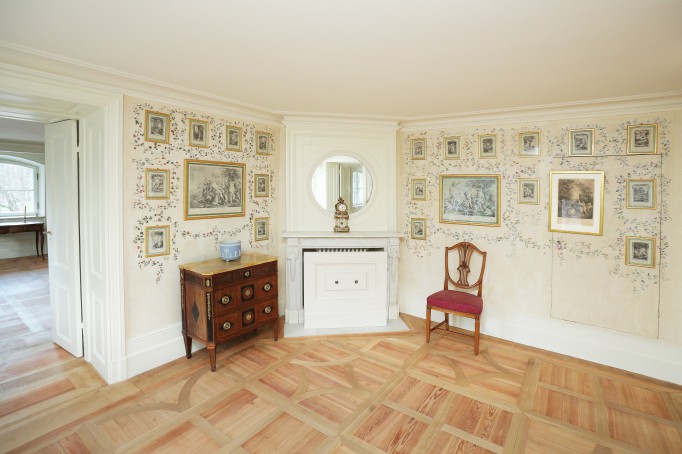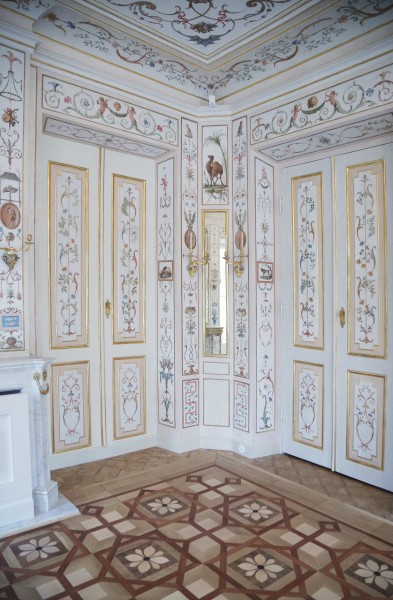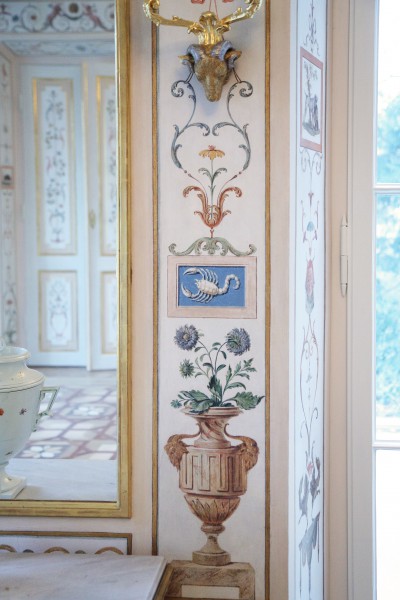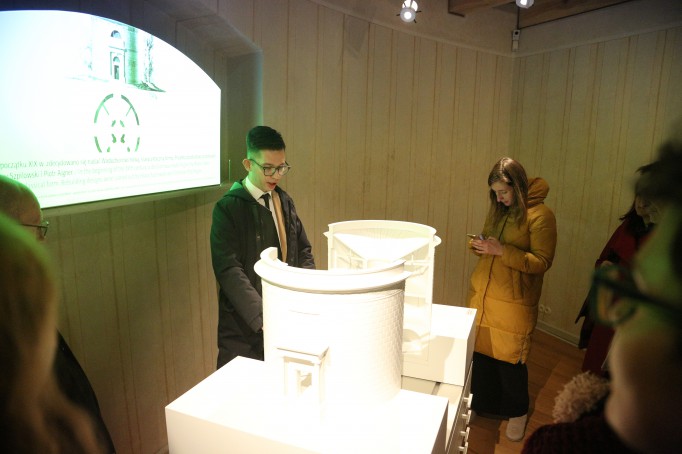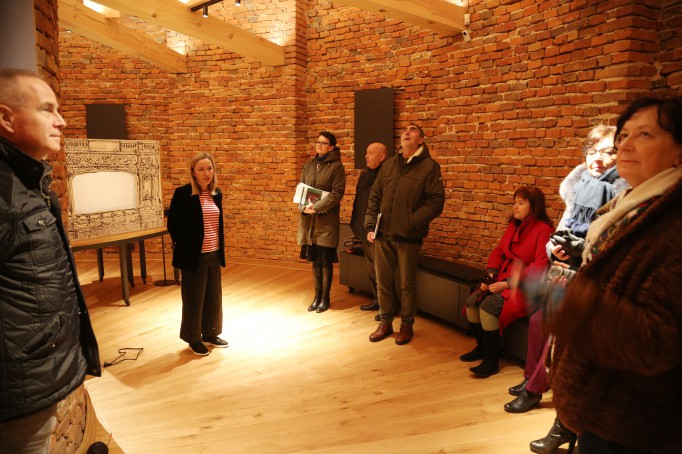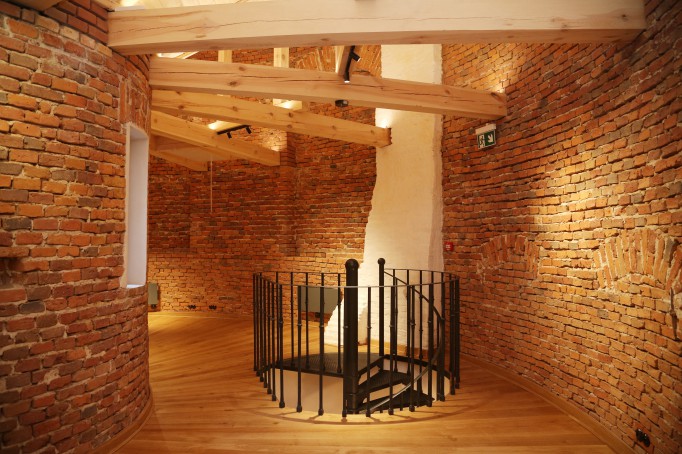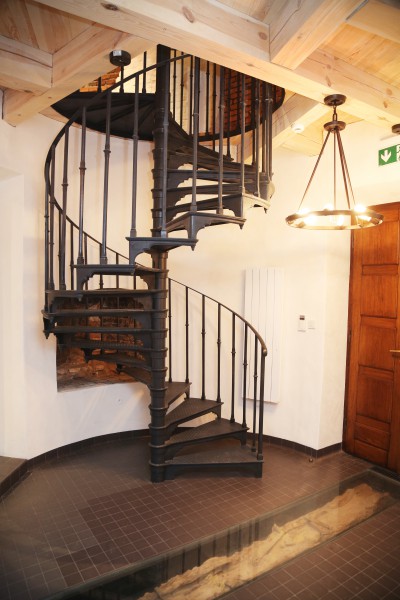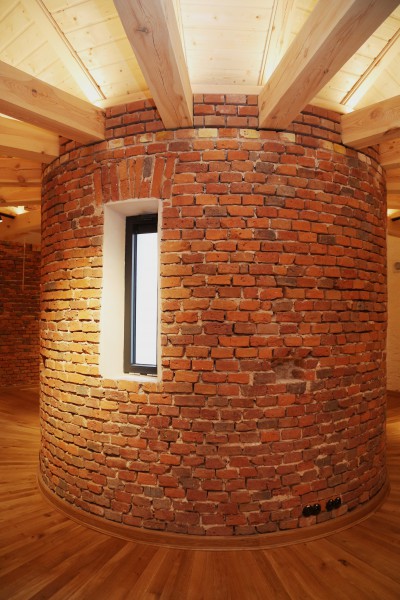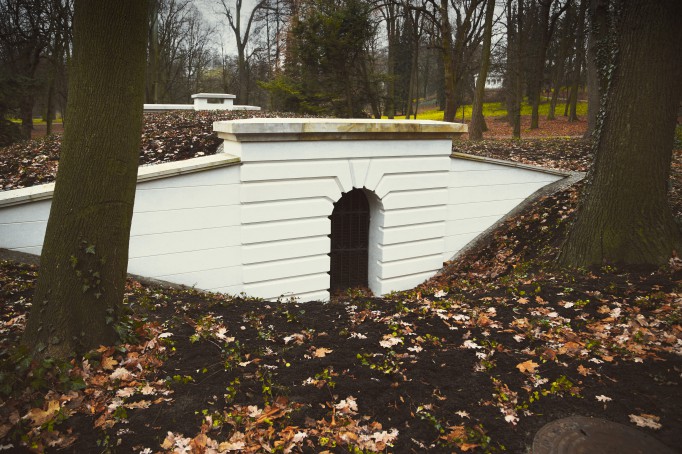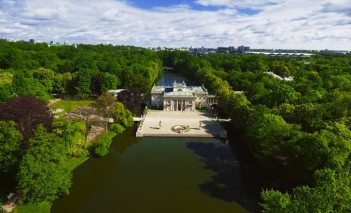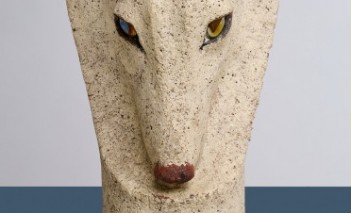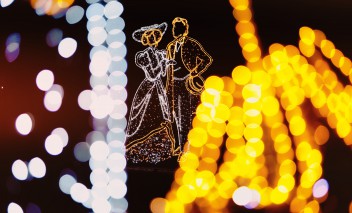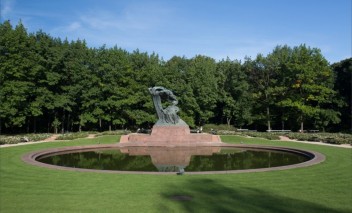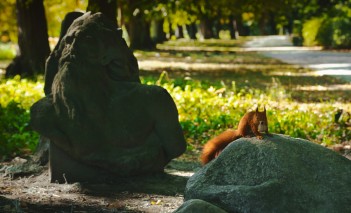New brilliance of the Royal Łazienki. The project "Sources of Transformations" has been completed
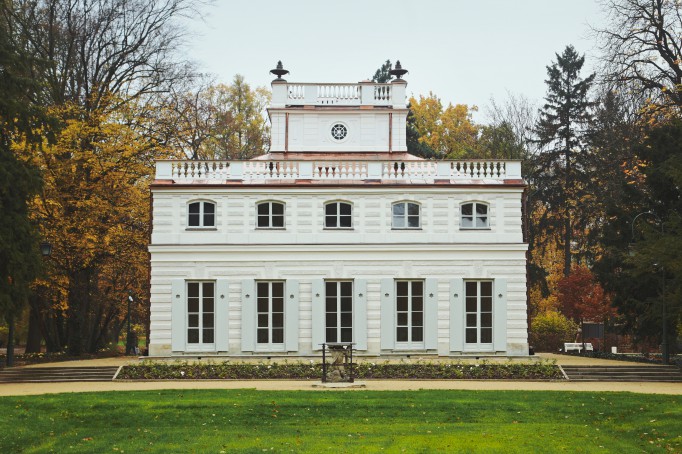
The White Pavilion and the Water Tower have been restored to their former splendour. Featuring new displays and an educational and cultural programme, they will open to visitors in spring. The historic garden surrounding both monuments and the relics of the Neogothic Orangery have also been renovated. The project which enabled to carry out conservation and renovation works was summarized at a conference in the Old Orangery held on 10 December 2019.
In the Royal Łazienki, the years 2017-2019 saw the implementation of the project "Sources of Transformations. Protection and Sharing of the Historic Heritage of the Royal Łazienki. Conservation and Renovation of the White Pavilion and the Water Tower Together with the Historic Garden of the Royal Łazienki Museum in Warsaw" as a next step of the program of regeneration of the whole palace and garden complex.
The cost of the project amounted to 17,489,733.91 zlotys, including 10,655,784.63 zlotys transferred by the Ministry of Culture from the European Regional Development Fund under the Operational Program Infrastructure and Environment 2014-2020, while the amount of 2,663,946.17 zlotys was earmarked by the Ministry of Culture and National Heritage.
Extensive conservation and renovation works were performed on two monuments located on the western edge of the Royal Promenade – the White Pavilion and the Water Tower. Also the historic garden surrounding the monuments and the relics of the Neogothic Orangery were regenerated. The efforts were aimed at securing the historic substance of the pavilions and preparing them for museum displays to be presented there. As a result of the project, space for new educational and cultural activities was created.
Villa with original polychromes
The White Pavilion is one of the most unique Polish monuments of the 18th-century residential architecture: preserved almost in its entirety together with the interior decoration and a part of the furnishings. This compact pavilion, built on a square plan and surrounded by a canal, was developed as a summer villa for King Stanisław August. Eventually, for his summer residence, the monarch chose the expanded baths, and the White Pavilion served the guests from the closest circle of the ruler.
In the last two years, the villa underwent comprehensive conservation and renovation works. The primary objective was to preserve the original substance, enhance its unique artistic value and restore the historic design of the interiors. Based on research work and archival queries, a team of conservators conducted comprehensive conservation and restoration of the painting decorations of Jan Bogumił Plersch and Jan Ścisły, adorning the interior of the White Pavilion. At the same time, under present-day layers of paint, original hidden elements were uncovered of the polychromes and fragments of paintings in the bedroom which had been used by the family of King Stanisław August. The roof, stairs and ceiling of the building were repaired. Renovation works encompassed the interiors, polychromes, ceiling plasters, floors, fireplaces and wooden decorations. Conservation measures were applied to the facade and ornaments. The external carpentry, the windows and the colours of the building regained their original appearance. The exhibition display of the White House, which the guests of the Royal Łazienki can see already in spring 2020, will include among other things a collection of royal prints of the "Metamorphosis" series and the original furnishings from the time of the last ruler of Poland.
Water Tower opened after many years
Thanks to the project "Sources of Transformations", visitors will have the opportunity to see, for the first time in many years, the Water Tower which in the times of Stanisław August was a brick rotunda converted in 19th century according to a design modelled to the antique tomb of Cecilia Metella by the Roman Via Appia. The building, also called the Reservoir and once used as a water tank supplying water to adjacent buildings and fountains, today underwent thorough conservation and renovation works. In the building, which bears testimony to former technological solutions, historic interiors were restored along with relics of the original functionalities. These include among other things the reconstructed polychromes, heating equipment and a wooden gutter uncovered under the floor of the vestibule and once used to drain water from the courtyard.
The extraordinary history of the Water Tower will be told by an exhibition about the old water management system of the Royal Łazienki. Visitors will be able to discover the symbolism of water used by Stanislaw Herakliusz Lubomirski and Stanislaw August and the importance of aquatic performances in the process of building up prestige by the last king of Poland.
The garden in its historical form
The project "Sources of Transformations" covered also the regeneration of the relics of the Neogothic Orangery. These are the remains of an impressive building erected in the vicinity of the White Pavilion, by the route leading from the Belvedere to the Palace on the Isle. The walls resting on the ground were in bad condition and required urgent conservation measures. Archaeological research carried out on that occasion allowed to confirm the former function of the building, and specify in approximation its original size, ornaments and colours.
The works in the historic garden surrounding the White Pavilion and the Water Tower were designed to restore its historical form, known from documents, studies and iconographies. They comprised among other things the adjustment of the height system, upgrade of the surface and rehabilitation of greenery. Historic elements of small garden architecture were put in place (benches, pots); they were designed according to archival sources, mainly watercolours of Zygmunt Vogel dating from 1786.
A more accessible museum
The Royal Łazienki Museum’s priority is to adapt the cultural and educational offer to the needs of the disabled. As part of the project "Sources of Transformations", the White Pavilion and the Water Tower were equipped with facilities for visitors with special needs. In the interiors of the 18th-century villa, visitors can now use audio descriptions and audio guides, and typhlographics of paintings, sculptures, furniture, wallpapers, vases, clocks, prints from the Royal Collection of Prints of Stanisław August and views of the facade of the White Pavilion. The display in the Water Tower offers typhlographics of exhibits, of the view of the facade and typhlomaps of the ground floor and the first floor. Moreover, three-dimensional tactile mock-ups of the Water Tower, the White Pavilion and the garden with the water system of Łazienki became part of the exhibition. For the hearing-impaired, induction loops and videos translated into the Polish Sign Language were prepared.
The Museum also strives to ensure access to the interior of the buildings to persons with mobility impairments. For that reason, the rooms were specially adapted, among other things through the removal of thresholds and level differences and adjustment of the furniture arrangement, as well as purchase of a lift for wheelchairs for children and adults and poles with a chair of a tripod type.
Regeneration of the Royal Łazienki
The conservation and renovation works, which were carried out in the White Pavilion and the Water Tower, form another stage of regeneration of the Royal Łazienki. The process began in 2010. Since then, the major buildings of the royal residence were restored to their former splendour: The Palace on the Isle, the Old Orangery and the Myślewicki Palace. Conservation works covered also valuable painting collections, sculptures and graphics. A part of the historic garden of the Museum was redeveloped as well. In total, the regeneration programme cost over 130 million zlotys and was financed among other from European funds, the Norway Grants, funds from the Ministry of Culture and National Heritage and National Fund for Environmental Protection and Water Management.
